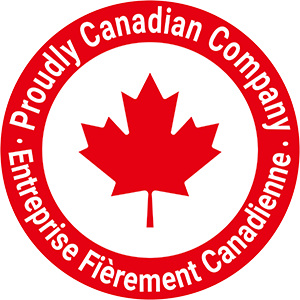HR Risk Management – Full Guide
By Adrienne Reilly |
12.7 min read
HR Risk Management: A Full Guide with The Predictive Index Advantage
In today’s volatile business environment, human capital remains one of the greatest assets—and one of the biggest risks. Organizations are navigating an increasingly complex talent landscape marked by regulatory shifts, rapid technological evolution, and changing workforce expectations. From compliance failures and leadership misalignment to talent shortages and poor culture fit, human-related vulnerabilities can expose businesses to significant operational, financial, and reputational risks.
This HR Risk Management—Full Guide aims to equip HR leaders, business executives, and organizational strategists with a comprehensive understanding of how to proactively identify, assess, and mitigate HR-related risks before they escalate. More than just identifying what can go wrong, effective HR risk management is about implementing systems and tools that foster sustainable growth, agility, and a strong organizational culture.
At the core of this strategy is the power of people data. That’s where The Predictive Index (PI), delivered by Predictive Success, becomes a game-changer. With its science-backed assessments, workforce analytics, and strategic talent optimization tools, PI provides a clear lens through which organizations can manage risk and make more informed decisions across the employee lifecycle.
This comprehensive guide explores the concept of HR risk management, outlines key risk areas, and shows how organizations can leverage The Predictive Index (PI), delivered by Predictive Success, to mitigate risk and build a more resilient, high-performing workforce.
Table of Contents
- What is HR Risk Management?
- Why HR Risk Management Matters
- Categories of HR Risk
- The Role of The Predictive Index in HR Risk Management
- Building an HR Risk Management Framework
- Case Study: Risk Mitigation in a Growing Tech Firm
- Expanded Case Study: HR Risk Transformation in a Manufacturing Enterprise
- Case Scenarios and Mitigation Tactics
- Predictive Success: Your Partner in Risk Management
- Industry Trends and the Future of HR Risk
- Frequently Asked Questions
- Conclusion
1. What is HR Risk Management?
HR risk management is the process of identifying, analyzing, and mitigating risks related to an organization’s human capital. These risks can stem from hiring decisions, leadership effectiveness, compliance issues, employee relations, talent development, or cultural misalignment.
HR risks are often less tangible than financial or operational risks, but their impact can be just as severe. For example, a bad hire in a senior leadership position can trigger mass turnover, reduce morale, and even hurt company reputation. Similarly, failing to comply with employment law can lead to legal action and significant financial penalties.
Effective HR risk management involves both prevention and mitigation. It combines strategic foresight with data-driven decision-making to ensure that people practices support organizational goals while reducing the likelihood of adverse outcomes.
2. Why HR Risk Management Matters
HR risk management matters because people are the lifeblood of any organization. Without careful oversight and strategy, human capital risks can cause ripple effects across every department.
Key Benefits:
- Improved Decision-Making: Objective data enhances hiring, promotion, and succession decisions.
- Business Continuity: Proactively managing HR risks reduces the likelihood of disruption due to turnover or non-compliance.
- Cultural Alignment: Identifying and addressing risks helps maintain a healthy, inclusive workplace culture.
- Enhanced Reputation: Managing reputational risks related to people practices builds trust with clients, investors, and the public.
- Cost Savings: Avoiding hiring mistakes, litigation, and disengagement saves organizations significant money.
Risk is inevitable, but with the right tools and processes, it can be controlled and even turned into a competitive advantage.
3. Categories of HR Risk
Understanding where risks can arise helps you develop a comprehensive mitigation strategy. HR risks generally fall into the following categories:
A. Strategic Risk
These risks occur when HR initiatives are misaligned with business goals.
- Talent gaps in strategic roles
- Resistance to organizational change
- Workforce misalignment with evolving customer needs
B. Compliance & Legal Risk
Failure to adhere to labor laws and internal policies.
- Discrimination and harassment claims
- Non-compliance with diversity and inclusion requirements
- Inaccurate employee classifications
C. Operational Risk
Day-to-day issues in HR functions and systems.
- Inefficient onboarding
- Poor record-keeping
- Payroll and benefit errors
D. Financial Risk
Cost-related risks tied to poor workforce planning or people management.
- High turnover costs
- Overstaffing or understaffing
- Compensation inequality leading to disengagement or lawsuits
E. Reputational Risk
Damage to employer brand and public image.
- Toxic workplace culture
- Social media controversies
- Negative employee reviews
F. Talent Risk
Inability to attract, retain, and develop top talent.
- Poor succession planning
- Misaligned recruitment strategies
- Skill gaps in key departments
Each risk type requires different solutions—and many are interrelated. That’s where The Predictive Index shines.
4. The Role of The Predictive Index in HR Risk Management
The Predictive Index is a talent optimization platform that uses behavioral and cognitive assessments to drive better people decisions. When delivered by Predictive Success, it becomes a powerful tool in any HR risk management strategy.
A. Hiring Risk
PI helps build a job profile and identify candidates whose behavioral and cognitive patterns match success criteria.
- Reduce turnover by hiring for fit
- Minimize bias in recruitment
- Speed up the hiring process with automation
B. Leadership Risk
PI identifies leadership styles and gaps, offering clear data to build effective leadership pipelines.
- Support high-potential talent development
- Improve executive team alignment
- Prevent burnout and mismatch in leadership roles
C. Team Dysfunction Risk
Through Team Discovery, PI uncovers how team members interact and what drives friction.
- Create balanced teams
- Improve collaboration and decision-making
- Reduce internal conflict
D. Engagement and Retention Risk
Behavioral data helps tailor engagement strategies to individual needs.
- Personalize career development
- Provide meaningful recognition
- Improve manager-employee relationships
E. Strategic Talent Planning Risk
PI provides insights into role fit and cognitive capabilities, supporting workforce planning.
- Align talent to future needs
- Spot reskilling opportunities
- Create data-driven succession plans
5. Building an HR Risk Management Framework
A systematic approach ensures consistency and accountability. Here’s how to build a risk management strategy, step-by-step.
Step 1: Identify Risks
Conduct audits across the employee lifecycle, from recruitment to exit. Tools like PI assessments and employee feedback surveys can highlight risk hotspots.
Step 2: Analyze Risks
Evaluate the likelihood and potential impact of each risk. Consider both immediate and long-term consequences.
Step 3: Develop Response Strategies
Design proactive and reactive measures.
- Proactive: Use PI to hire the right people
- Reactive: Conflict resolution training for managers
Step 4: Implement Controls
Establish controls such as:
- Mandatory PI assessments for new hires
- Behavioral coaching for managers
- Regular culture audits
Step 5: Monitor and Review
Make risk management a continuous process.
- Use analytics dashboards
- Conduct quarterly reviews
- Update strategies based on evolving needs
6. Case Study: Risk Mitigation in a Growing Tech Firm
Background: A mid-sized Canadian tech company was scaling rapidly but began experiencing a 30% turnover rate among product and development teams, inconsistent leadership performance, and decreased employee engagement.
Challenge: Leadership suspected poor team cohesion and hiring misalignment but lacked data to pinpoint root causes.
Solution: Predictive Success introduced The Predictive Index platform across all departments. The first step was a behavioral analysis of high performers to create Job Targets. This was followed by applying PI’s cognitive and behavioral assessments during recruitment and internal team reviews.
Actions Taken:
- Job Targeting for all technical roles
- Behavioral Fit assessments for all hiring managers
- Team Discovery sessions with product, engineering, and executive teams
- Coaching workshops to align leadership and communication styles
Results:
- Turnover decreased to 12% within 9 months
- New hires had a 94% match with role-based Job Targets
- Team productivity and innovation metrics improved by 27%
- Engagement scores rose by 22% in post-implementation surveys
Conclusion: By leveraging The Predictive Index through Predictive Success, the company mitigated key HR risks during a critical growth phase and improved alignment across its people strategy.
7. Expanded Case Study: HR Risk Transformation in a Manufacturing Enterprise
Company: Dominion Components Inc. (Pseudonym)
Industry: Advanced Manufacturing
Size: 1,200 employees across North America
Challenge: High turnover in skilled labor, misaligned leadership, compliance audits at risk, and slowing production output due to disengaged teams.
The Problem
Dominion Components was facing a multi-pronged HR crisis:
- Annual turnover in production roles exceeded 35%, threatening output and continuity.
- A legacy leadership team resisted change and lacked data-driven alignment with operational goals.
- HR compliance audit scores were declining due to gaps in onboarding documentation and poor role clarity.
- Employee engagement surveys indicated widespread disengagement, especially among tenured staff.
- Recruiting costs were rising, and the time-to-fill open roles had increased by 45% over two years.
- Conflicts between departments, especially operations and HR, were on the rise, leading to siloed communication and lack of shared goals.
Intervention Strategy
Dominion Components partnered with Predictive Success to launch an HR risk transformation initiative grounded in The Predictive Index. The collaboration aimed to holistically evaluate people-related risks and align workforce capabilities with strategic business goals.
Phase 1: Diagnostic and Risk Identification
- Job Targeting Analysis: PI was used to establish role benchmarks for key production and technical roles. Job models were defined based on top performer analysis.
- Behavioral and Cognitive Mapping: Over 600 employees were assessed using PI Behavioral and Cognitive Assessments to evaluate job fit, learning agility, and team role alignment.
- Leadership Fit Assessment: Senior managers completed PI assessments to uncover team friction, decision-making mismatches, and blind spots that hindered collaboration.
- Engagement Data Integration: Survey insights were mapped against behavioral drives to identify patterns of disengagement, including feedback fatigue, lack of autonomy, and poor recognition practices.
- Compliance Risk Evaluation: Using PI insights, HR teams conducted internal audits to detect procedural gaps in hiring, onboarding, and documentation management.
Phase 2: Mitigation and Optimization
- Hiring Process Redesign: The hiring strategy was rebuilt using PI Job Targets, with assessments embedded early in the recruitment process. PI insights helped recruiters better predict success and reduce reliance on gut feelings.
- Leadership Restructuring: Based on PI Team Discovery, several departments underwent realignment. Leaders were repositioned where their natural drives would add the most value.
- Onboarding Compliance: Predictive Success implemented a PI-powered onboarding playbook. It included behavioral reference guides, onboarding trackers, and role compatibility reports to ensure full documentation.
- Engagement Tactics: Managers received coaching based on their team members’ PI profiles. This helped tailor communication styles, delegation approaches, and recognition strategies.
- Talent Pipeline Development: Future workforce planning was built into the strategy using PI data, including succession planning and development plans customized to each employee’s behavioral profile.
- Cross-functional Team Workshops: Predictive Success facilitated PI-based team building sessions to reduce interdepartmental silos and encourage shared accountability.
Phase 3: Results and Monitoring
- Turnover dropped to 18% in 12 months in high-volume roles, with new hires staying an average of 2.3 years longer.
- Leadership alignment score rose by 40%, based on post-PI implementation surveys.
- Compliance readiness improved, with audit scores improving by 25% in the next cycle. All onboarding documentation was digitized and linked to PI profiles.
- Productivity increased by 21%, attributed to stronger team cohesion and better role fit.
- Recruiting efficiency improved, with time-to-fill decreasing by 33%.
- Employee engagement scores rose 29%, with significant improvements in the areas of trust in leadership, role clarity, and psychological safety.
Leadership Reflection
According to the CHRO: “The Predictive Index gave us a blueprint to understand people like never before. With Predictive Success guiding us, we didn’t just patch the risks—we transformed them into strengths.”
The CEO also commented: “We used to think culture was an intangible—hard to measure and even harder to influence. But PI gave us the science to shape it intentionally.”
Lessons Learned
- Behavioral misalignment is a silent driver of turnover, disengagement, and conflict. You need data to diagnose it.
- Objective tools like PI eliminate bias in hiring, coaching, and succession planning.
- HR risk management must be ongoing, with frequent touchpoints and predictive analytics built into workforce planning.
- Investing in behavioral data provides clarity in moments of uncertainty, enabling faster decision-making and more resilient teams.
A Look Ahead
Dominion Components now integrates PI data into every level of talent strategy—from onboarding to offboarding. They’ve begun using PI’s Inspire and Diagnose tools to continuously monitor team dynamics and engagement. In a world where workforce risk can change overnight, this proactive stance allows them to stay agile.
They’ve also partnered with Predictive Success to implement advanced analytics dashboards that connect behavioral data with KPIs, providing HR and business leaders with real-time visibility into emerging risks and opportunities.
Summary
By transforming their approach to people management through The Predictive Index and Predictive Success, Dominion Components successfully turned their biggest risks into sustainable advantages. Their journey underscores the power of integrating behavioral science into HR risk strategy.
8. Predictive Success: Your Partner in Risk Management
Predictive Success is a Certified Elite Partner of The Predictive Index and has helped hundreds of organizations de-risk their people strategies. Here’s how:
- Tailored Consulting: We work with leadership teams to align HR and business strategies
- Expert Training: Our facilitators train managers in behavioral coaching and team dynamics
- Integrated Solutions: From onboarding to succession, we provide tools and data to support every step
- Continuous Support: Ongoing check-ins, dashboards, and workshops to adapt to your changing needs
With Predictive Success, you don’t just use PI—you master it.
9. Industry Trends and the Future of HR Risk
The workplace is evolving rapidly. Understanding emerging trends helps anticipate future HR risks.
A. Remote and Hybrid Work
Challenges in monitoring performance, engagement, and compliance remotely.
- Use PI to assess remote working capabilities
- Monitor team cohesion through Team Discovery
B. AI and Automation
Skills gaps and job displacement
- PI helps identify reskilling opportunities
- Predictive Success offers insights on future-fit behaviors
C. Mental Health and Wellbeing
Burnout and stress are major risks
- Behavioral data can highlight early signs
- Managers can tailor support and communication accordingly
D. DEI and Workplace Culture
Lack of inclusion can lead to turnover, reputational damage
- PI helps build inclusive teams through unbiased hiring
- Cultural alignment workshops foster belonging
Staying ahead of these trends requires agility, awareness, and the right tools.
10. Frequently Asked Questions
What size of organization benefits from HR risk management?
Any organization—from start-ups to enterprises—benefits. The scale of risk may vary, but the potential impact remains significant.
Is The Predictive Index compliant with legal standards?
Yes, PI assessments are scientifically validated and compliant with EEOC, ADA, and other global standards.
How quickly can we implement PI for risk management?
Many clients see results within weeks. Predictive Success supports rapid deployment and training.
Can we integrate PI with existing HR software?
Yes. PI integrates with most major HRIS and ATS platforms for seamless data flow.
How do we measure the ROI of PI in risk management?
Track KPIs such as turnover rate, engagement scores, team productivity, and legal claims before and after implementation.
11. Conclusion
Risk is an inevitable part of managing people, but it doesn’t have to be unpredictable. With the right systems, insights, and support, organizations can transform HR risk into opportunity.
The Predictive Index, delivered by Predictive Success, offers a proven, data-driven path to reduce uncertainty, improve talent decisions, and future-proof your workforce. From hiring and leadership to team cohesion and engagement, every people decision becomes a strategic advantage.
Ready to de-risk your people strategy?
Connect with Predictive Success today and start building a smarter, safer, and more successful organization.
About Predictive Success Predictive Success is a trusted leader in talent optimization and the official Certified Elite Partner of The Predictive Index in Canada. We help organizations align people strategy with business strategy using data, science, and expert guidance.
Visit www.predictivesuccess.com to learn more.
Related Blogs
Layoffs vs. Furloughs: What’s the Difference and Which Is Better for Employers?
Layoffs vs. Furloughs: What's the Difference and Which Is Better for Employers? Economic uncertainty, market shifts, and rapid organizational change force leaders to make difficult workforce decisions. One of the most common challenges leaders face
5 Types of Communication Styles and How to Use Them Effectively
The 5 Communication Styles and How to Use Them Effectively Communication is the foundation of every successful business interaction, whether you are leading a strategic planning session, managing change, coaching a team member, or sharing
Average Typing Speed (WPM): What’s Good, What’s Fast and How to Improve
Average Typing Speed (WPM): What’s Good, What’s Fast, and How to Improve Whether you’re a student, professional, or casual computer user, typing efficiently can save you countless hours each year. But how do you know




